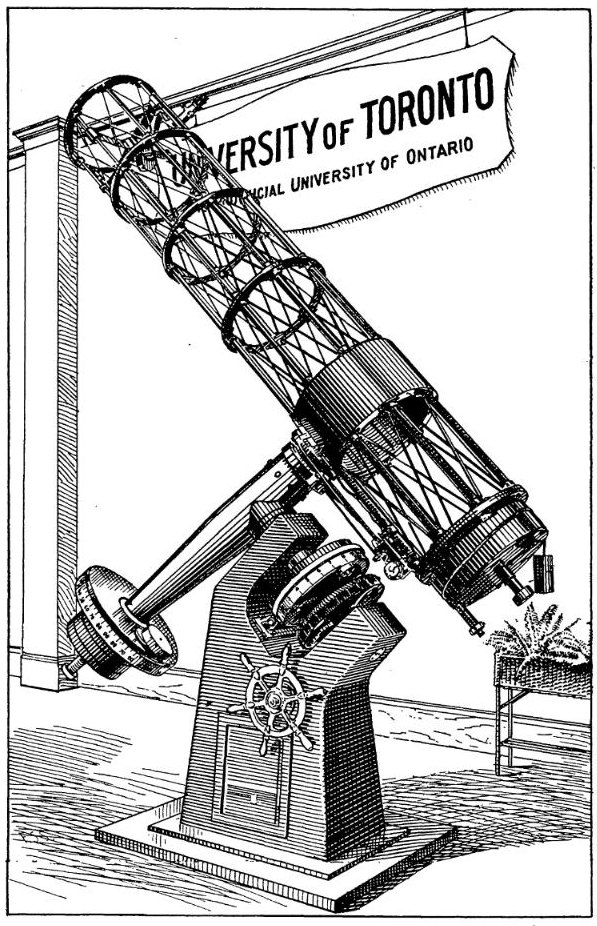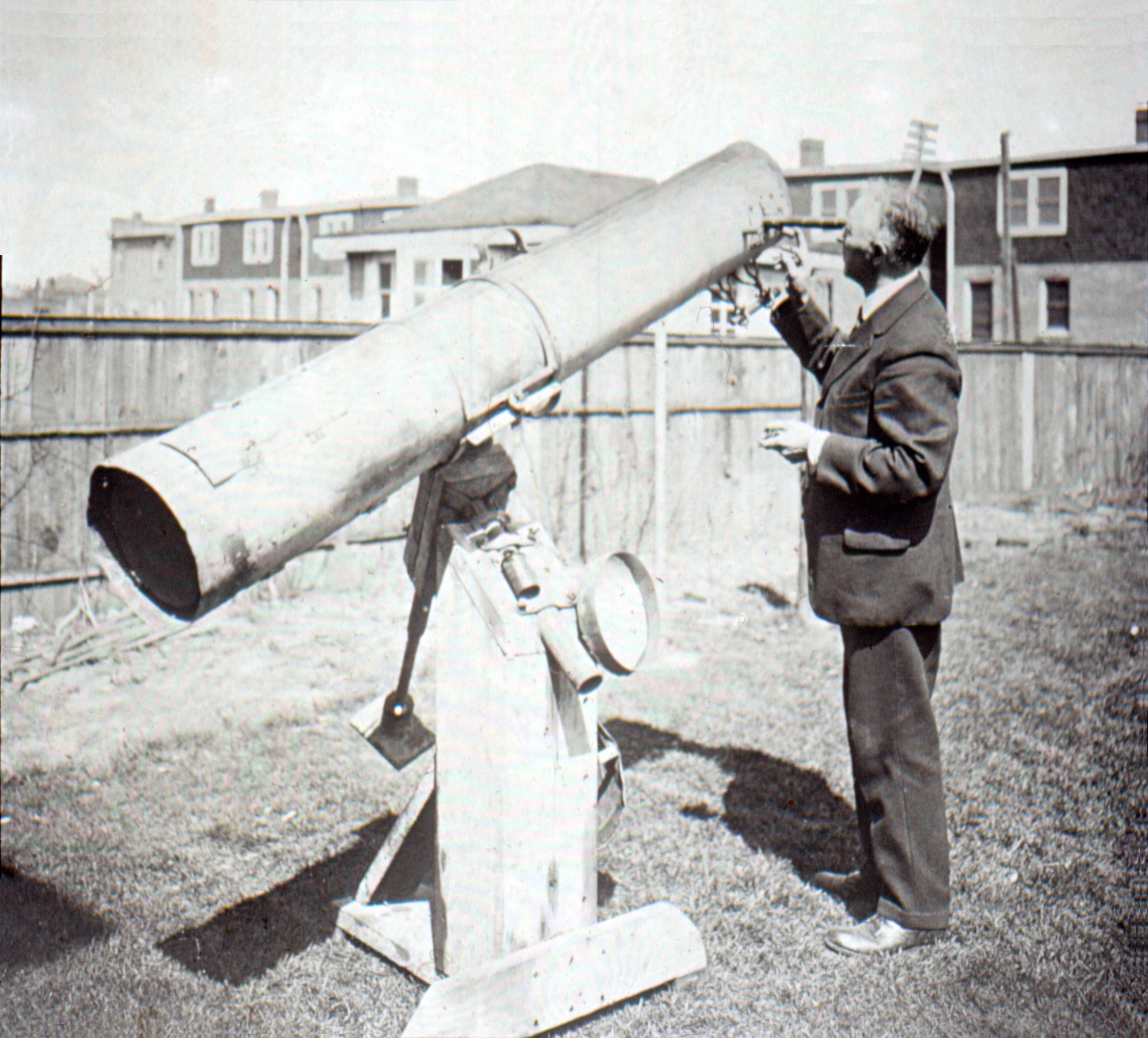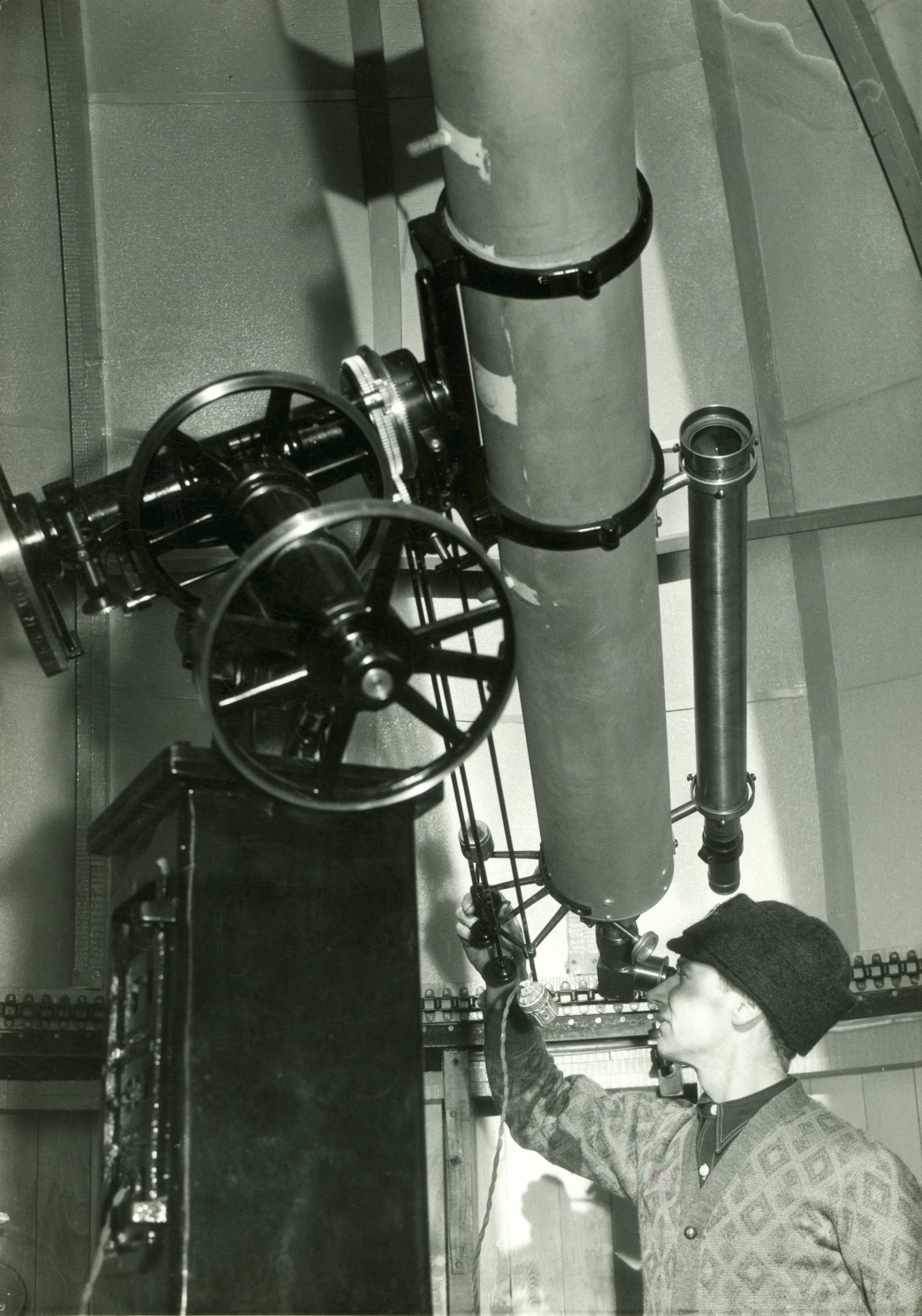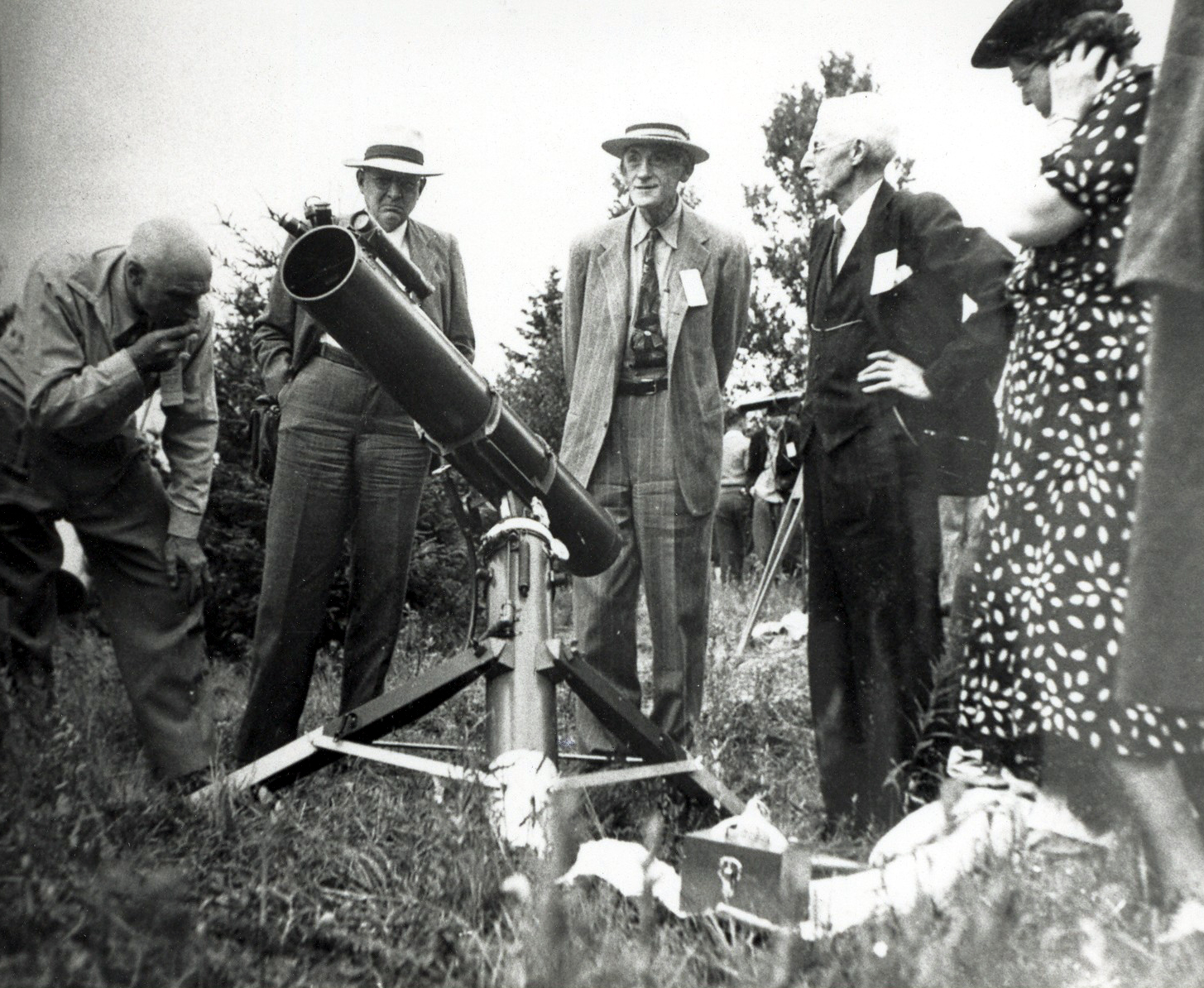We amateur astronomers of today live a charmed life. Astronomical equipment, good astronomical equipment, has seemingly never been so plentiful, or so inexpensive. The latter is undoubtedly due to the workings of the global economy, in particular the recession of trade barriers, and capital's never ceasing search for the cheapest skilled and semi-skilled labour. It has been good for the telescope consumer, but not so good for many former telescope makers in the West; there are markedly fewer of them operating now than in 1990, or the decade earlier, to judge from the quantity, variety, and origin of ads in Sky & Telescope of that period.There is a price for everything.
Matters were very different before the era of cheap, and serviceable astronomical equipment from overseas. Up until the early 1980s, unless one was fortunate enough to have been born into wealth, or subsequently become monied, commercial astronomical equipment was less obtainable due to its proportionately greater expense. Many amateurs who wished to observe had no choice but to build their own equipment. Several episodes of RASC members' invovlement in the amateur telescope making movement are recounted in this podcast. Some amateurs became very skilled telescope makers, acquiring expertise to equal that of the professionals. Others, not so much. Working at the craft of telescope making fostered a remarkable camaraderie among the "glass pushers", wharever their level of skill. The number of amateurs who now make their own equipment is a tiny fraction of what it once was, but, fortunately, amateurs still practice the craft, enough to maintain some active ATM communities. We all benefit from their continued existence.
______________________
______________________________________
The begining of the podcast starts out in antiquity. The book by Kenneth P. Oakley is Man the Tool Maker, and a copy of the sixth edition is accessible online (London: British Museum, 1961). Oakley himself was an interesting scholar. All this is radiacally pre-telescopic. and who can say what the observational practices of many prehistoric peroples were? Tools were essential to their survival, and in working materials with tools, the tools may have worked on them.
With Joseph Moxon, Hydrographer to Charles II, we are definitely in the age epoch of the telescope; his Mechanik Exercises: or the Doctrine of Handy-Works, 3rd ed. (London: Midwinter, 1703) is as publicly accessible as if it were kept at a philosophical coffee shop (we quote from pp. 1-2 of the preface).
Illuminating, and salutary lists of commercial telescope prices from ca. 1900 can be found in Frank M. Gibson, The Amateur Telescopist's Handbook (New York: Longmans, Green, and Co., 1894), at pp. 74-81.
On Mungo Turnbull, one of the earliest of the Society's ATM's, see R.A. Rosenfeld, "A Transit of Venus Dream Unfulfilled: Mungo Turnbull and Sir John A. Macdonald", JRASC 106, 1 (2012 February), 27-33, and R.A. Rosenfeld & Tom Luton, "Further Light on Mungo Turnbull and the 1882 Transit of Venus Reflected in Press Reports from Toronto and Environs", JRASC 106, 2 (2012 April), 77-82. At this remove, and without access to any surviving instruments by Turnbull, it is diffiuclt to assess his competence as an instrument maker. Charles Potter, another early Society member, is an other matter; he was one of the few professional scientific instrument makers in Toronto in his day; J.A. Smith, "Potter, Charles—Optician and Instrument Maker", JRASC 87, 1 (1993 February), 14-33.
Albert Hassard enjoyed more prominence in the ATM movement than did Turnbull; J.R. Collins,"Albert Richard Hassard", JRASC 34, 5 (1940 October), 353-354. He, and one of his telescopes are pictured in Clarence Augustus Chant, Our Wonderful Universe: An Easy Instruduction to the Study of the Heavens (Bombay: George G. Harrap & Co. Ltd., 1928), p. 117, fig. 86.
Two thirds of the fabled Scientific American amateur telescope making volumes are online; volume I, Amateur Telescope Making, ed. Albert G. Ingalls (New York, NY: Munn & Co., 1935), and volume II, Amateur Telescope Making Advanced, ed. Albert G. Ingalls (New York, NY: Munn & Co., 1937). Volume III, Amateur Telescope Making Volume Three (1953) isn't—yet. The RASC contribution to the volumes, and the Scientific American "Amateur Scientist" columns is told in: R.A. Rosenfeld, "Russell W. Porter, Albert G. Ingalls, and RASC", JRASC 105, 1 (2011 February), 25-33.
Sources on Cyril Wates are J.W. Campbell, "The Wates Telescope and the University of Alberta Observatory", JRASC 37, 7 (1943 September), 265-268, and J.W. Campbell, "In Memoriam-Cyril Geoffrey Wates", JRASC 40, 2 (1946 February), 69-71.
Bringing the story to the present, Jim Chung's well-received book is Astro-Imaging Projects for Amateur Astronomers A Maker’s Guide (Cham–Heidelberg–New York–Dordrecht–London: Springer, 2015).

R.K. Young's 19-inch reflector on display at the provincial exhibition.

A.R. Hassard & one of his telescope's from Chant's Our Wonderful Universe.

Bert Topham's impressive 6-inch O.G. refractor, entirely the work of his own hands.

A.V. Whipple's (Montreal Centre) award-winning entry in the 1948 Stellafane ATM convention (photo by Frank De Kinder?).
—R.A. Rosenfeld
A transcript of this podcast is available.
| Attachment | Size |
|---|---|
| 205.3 KB |
